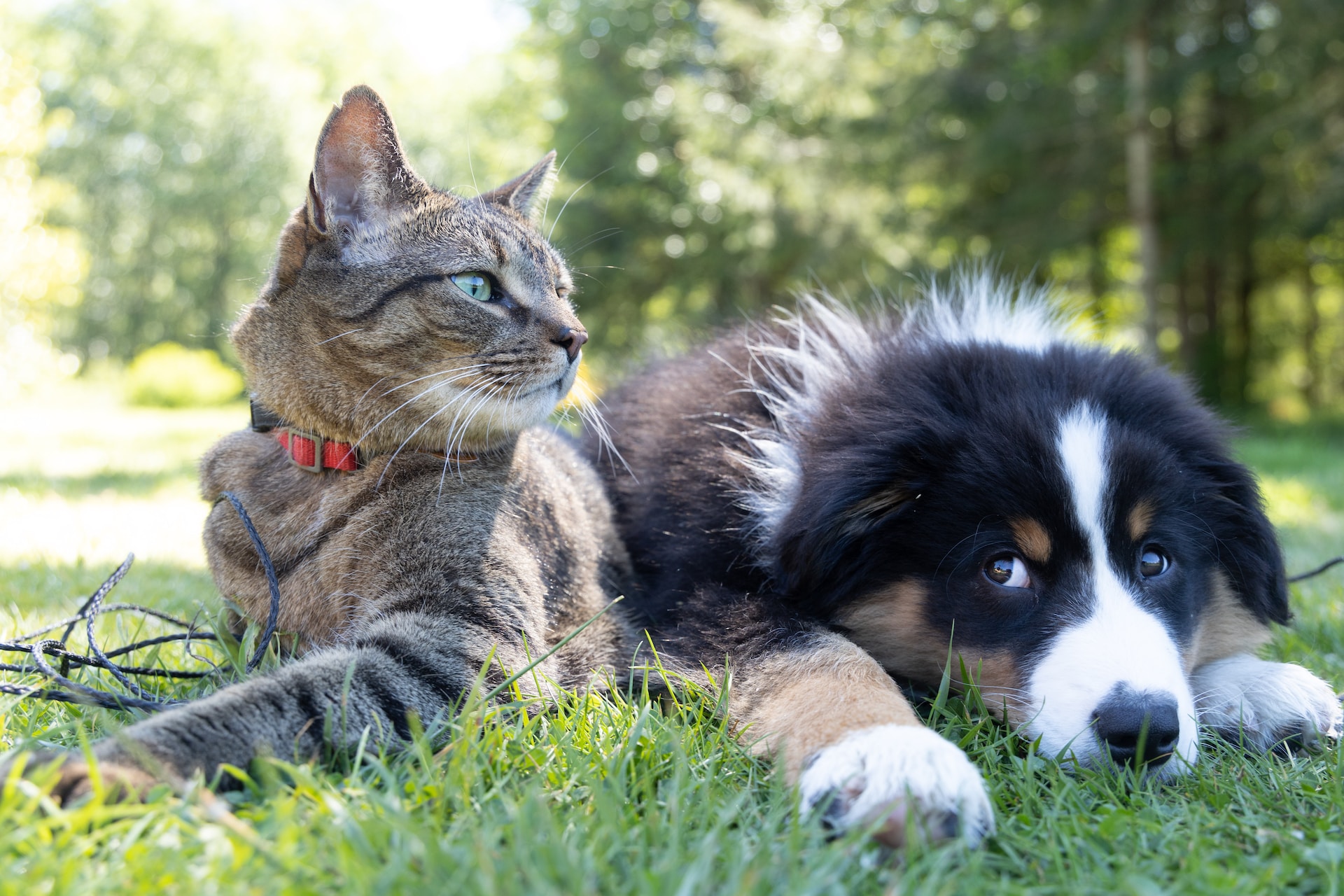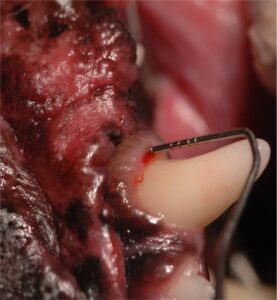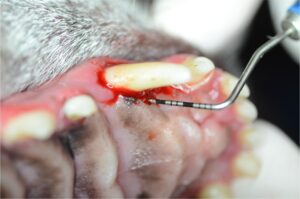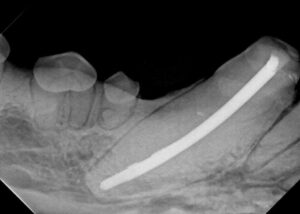
21 Sep When A 3- Or 6-Month Anesthetic Dental Procedure Is Recommended…And Why It Is Essential It Be Done
We all work on a 12-month cycle. We see our family vet for a wellness evaluation once yearly. Our pet gets blood work at least annually, and we can’t get our dog’s heartworm medication refilled unless we have our annual heartworm check. And for the most part, we recommend an anesthetic dental procedure for our pets annually.
When Do Pets Need a 3- or 6-Month Anesthetic Dental Procedure?
There is an exception to this dental rule, and I want to expand on this briefly. This way, you, the pet owner, are informed of this schedule modification, and how it benefits your pet. Let’s look at a few reasons why a 3- or 6-month recheck is warranted:
- Evaluation of a previously diagnosed periodontal pocket that was treated via root planing and a perioceutic or bone graft material
- Chronic gingival inflammation of which it is hard to perform home care (tooth brushing, rinses)
- 6-9 Month Post Root canal therapy
Evaluation of a previously diagnosed periodontal pocket that required therapy
To a periodontologist (and to a general dentist), saving a tooth is all about one thing…saving bone. The gingiva surrounding a tooth should have a pocket depth no deeper than 2-3 mm. In some instances, periodontal pocket depth probing exceeds this number, requiring additional therapy other than scaling.
With pocket depth from 3 mm-5 mm, we will treat the pocket by performing tooth root planing with a very sharp curette, removing the plaque and calculus on the tooth. In addition, we will then perform epithelial curettage, which removes the gingival inflammatory tissue thus allowing for normal gingival reattachment of tissue to the tooth root.
Finally, we may place a perioceutic that helps reduce pocket inflammation, helps with reattachment, and has an antibiotic within it to help with healing and reattachment. It takes a few weeks for this to heal and allow for a return to normal ‘reattachment’. The goal is to return the tooth to a 2-3 mm pocket. This is also true for any deeper pockets (>5 mm) that received open root planing and then a placement of a bone graft +/- guided tissue regeneration membrane (GTR).
However, pockets that are not monitored or maintained with home care can resort to the previous pocket depth, or even worse. Therefore, home care via oral rinses and daily brushing is ideal. Even so, the pet will need to have these pockets evaluated under anesthesia in 3-6 months, depending on the severity of the lesion and Veterinary Dental Specialist (TM) recommendation.

5 mm periodontal pocket on the right mandibular canine tooth. Normal probing for this tooth is 2-3 mm.

Deep pocket on the right maxillary canine tooth requiring open root planing and bone graft placement to stabilize this tooth
Chronic gingival inflammation of which it is hard to perform home care
You should read previous blogs related to small dogs and big problems regarding bone loss and inflammation. There are some pets, just like humans, that just have bad mouths, even though they are brushing daily and using oral rinses. Genetics and anatomy certainly come into play with regard to the severity of oral disease. These small pets (and some large breeds as well) have severe disease that requires more frequent anesthetic dental care.
This way, we don’t take one step forward and two steps back with inflammation and more importantly, quality of life. These pets may require anesthetic cleanings every 3-6 months. We won’t necessarily need to perform CBCT (Cone Beam CT) or dental x-rays at this visit, therefore the cost is less. With regard to anesthesia and the risks involved, this is why we have Dr. Kennedy on board as a Board Certified Veterinary Anesthesiologist (TM).
6-9 Month Post Root Canal Follow Up
After a tooth receives root canal therapy, it is wise to radiograph that tooth at the 6-9 month date. This allows us to see if the surrounding bone at the apex of the tooth is healing and infection is resolving. After this procedure, we will recommend evaluating every 12 months, which can be done at the time of the annual dental evaluation and cleaning/probing/charting/dental x-rays/CBCT. As a matter of fact, any time a root canal therapy has been performed, this should be followed annually, so it may be best to have us perform the annual cleaning with the blessings of your family veterinarian.

Root canal therapy of the right mandibular canine tooth
In conclusion, most anesthetic oral care is recommended annually. This is assuming the pet owner is working as best they can at home via tooth brushings, oral rinses, chews, and water additives. However, there are some cases in which we need to see your pets more frequently for an anesthetic dental procedure. Thankfully, these procedures are financially less to you and they provide the ability for us to continue the quality of care necessary to keep and sustain a healthy mouth.
Cheers!
Barden Greenfield, DVM, DAVDC – Your Pet Dentist of Nashville
Images used under creative commons license – commercial use (9/21/2023). Photo by Andrew S on Unsplash


